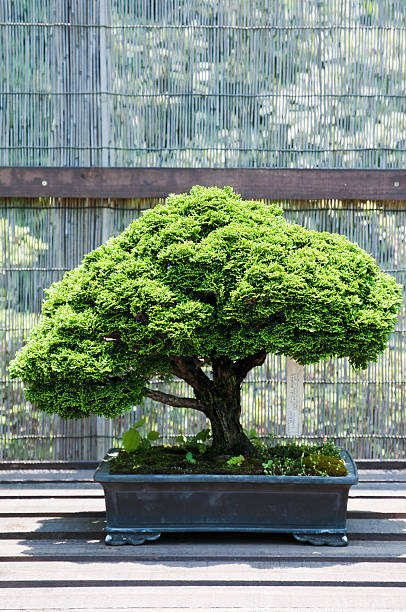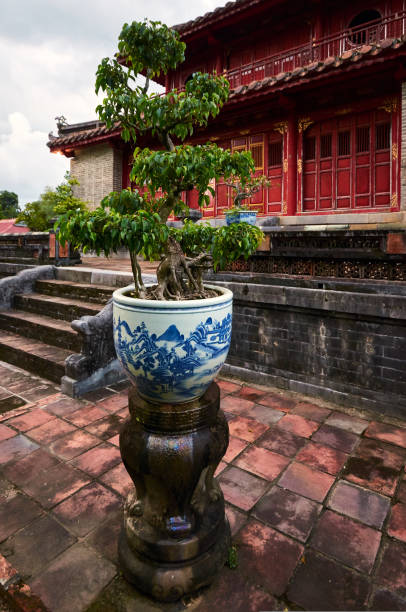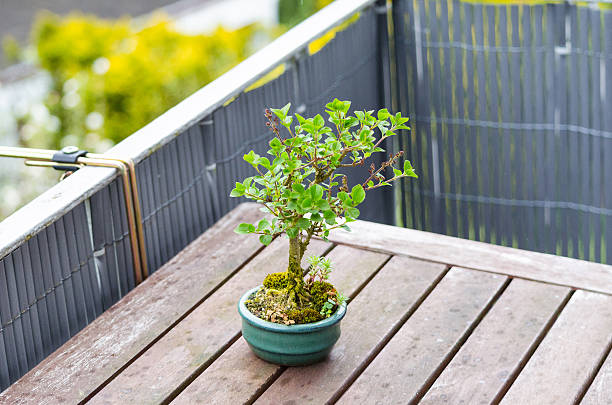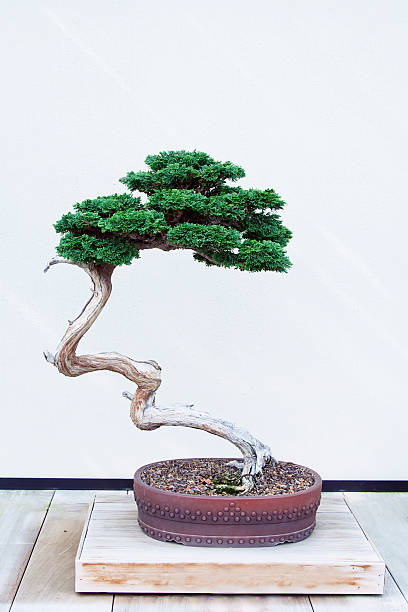
Hinoki Cypress Bonsai
The Hinoki Cypress is an evergreen conifer that originates from Japan. It is a slow-growing tree that can live up to 600 years old. The Hinoki Cypress has beautiful, light green needles and prefers humid conditions. It is a popular tree to use for bonsai because of its slow-growth habit and tolerance to being pruned.
The Hinoki Cypress is one of the most popular trees to use for bonsai because of its slow-growth habit and tolerance to being pruned. Bonsai is the art of growing miniature trees in pots or trays.
The Hinoki Cypress is a beautiful, evergreen conifer that originates from Japan. It has light green needles and prefers humid conditions. It is a slow-growing tree that can live up to 600 years old.
Bonsai growers love the Hinoki Cypress because it can be shaped into almost any style, making it a versatile tree for bonsai artists.
There are many different ways to style a Hinoki Cypress bonsai, but some of the most popular styles include formal upright, informal upright, slanting, cascade, semi-cascade, literati, and windswept.
The hinoki cypress is a beautiful tree that is perfect for those who want to get into the fascinating world of bonsai trees.
These trees are very versatile and can be styled in many different ways, making them ideal for beginner and experienced bonsai growers alike.
If you’re looking for a low-maintenance indoor plant that will bring some peace and relaxation into your life, the hinoki cypress bonsai tree is definitely worth considering!
Hinoki Cypress Bonsai Tree Care.

The Hinoki cypress is a favorite species for bonsai enthusiasts due to its small leaves, dense branching, and elegant shape.
A Hinoki bonsai tree can be both beautiful and easy to care for, making it a great choice for beginners. In this blog post, we will give you an overview of everything you need to know about Hinoki cypress bonsai tree care.
The Hinoki cypress is an evergreen conifer that is native to Japan. It can grow up to 60 feet tall in its natural habitat, but when grown as a bonsai tree, it will only reach a height of 2-3 feet. The leaves of the Hinoki cypress are small and scale-like, and the needles are a beautiful shade of green.
The Hinoki cypress is a slow-growing tree, so it does not need to be repotted very often. In fact, you can probably get away with repotting your Hinoki every two to three years.
When repotting, be sure to use a well-draining bonsai soil mix. The Hinoki cypress prefers humid conditions, so it is important to mist your tree regularly.
You can also set your tree on a humidity tray or pebble tray to help increase the humidity around your Hinoki.
You can also place your tree on a pebble tray filled with water to increase the humidity around your plant. The ideal temperature range for the Hinoki cypress is 60-70 degrees Fahrenheit. If you live in a cold climate, you should bring your tree indoors for the winter months.
When to Repot a Hinoki Cypress Bonsai.
A bonsai is a beautiful and intricate work of art. As with any type of art, it takes time, patience, and a certain amount of knowledge to create and maintain a bonsai tree.
One of the most important aspects of caring for your bonsai tree is knowing when to repot it. Here are some things to look for that will indicate it’s time to give your hinoki cypress bonsai tree a new home.
The roots of a hinoki cypress bonsai tree grow quickly. Therefore, it’s important to check the roots every few months to see if they’re congested or pot-bound.
If the roots are starting to snake their way out of the drainage holes at the bottom of the pot, it’s definitely time for a repot.
Another sign that it’s time for a repot is if you notice the tree beginning to lean to one side.
This usually happens when the roots on one side are constricted and can’t support the weight of the tree. If you see either of these signs, it’s time to give your hinoki cypress bonsai tree some more room to grow.
When you repot your hinoki cypress bonsai tree, be sure to use a well-draining soil mix and a slightly larger pot than the one you’re currently using.
It’s also important not to fertilize your tree for at least six weeks after you repot it. Too much fertilizer can burn the roots and damage your tree. With a little bit of care and attention, your hinoki cypress bonsai tree will thrive for years to come.
Repotting a hinoki cypress bonsai tree is an important part of its care. By knowing when to repot and using the proper materials, you can ensure that your bonsai tree will continue to be a beautiful and living work of art.
How to Fertilize a Hinoki Cypress Bonsai.

One of the most beautiful and popular varieties of bonsai is the Hinoki cypress. And like all plants, bonsai need nutrients to stay healthy and thrive. Here’s a quick guide on how to fertilize a Hinoki cypress bonsai.
Fertilizing basics
Fertilizing your bonsai is important because it provides the nutrients that the plant needs to stay healthy. But it’s also important to not over-fertilize, because that can be just as harmful as not fertilizing at all. When in doubt, it’s always better to err on the side of too little fertilizer rather than too much.
The type of fertilizer you use will also depend on the time of year. In general, you should use a balanced fertilizer with an NPK ratio of 10-10-10 in the spring and summer, and a slow-release fertilizer with an NPK ratio of 5-10-5 in the fall and winter.
How to fertilize a Hinoki cypress bonsai
When it comes to actually fertilizing your Hinoki cypress bonsai, there are two methods you can use: soil drenching or foliar feeding. Soil drenching is when you water the fertilizer directly into the soil around the base of the plant.
This method is best for plants that are actively growing, like in the spring and summer. Foliar feeding is when you spray the fertilizer onto the foliage of the plant. This method is best for plants that are not actively growing, like in the fall and winter.
For both methods, you’ll want to mix the fertilizer at half the recommended strength and apply it every other week. If you notice that your plant is starting to look yellow or pale, that’s a sign that it’s not getting enough nutrients and you should increase the frequency with which you’re fertilizing.
Fertilizing your bonsai is an important part of plant care, but it’s important not to overdo it. Stick to half-strength fertilizer applied every other week using either the soil drenching or foliar feeding method, depending on the time of year.
And if you notice your Hinoki cypress bonsai looking yellow or pale, up the frequency with which you’re applying fertilizer until it looks healthy again.
Pruning and Training a Hinoki Cypress Bonsai.
The Hinoki cypress is a beautiful evergreen conifer that is popular among bonsai enthusiasts. If you have a Hinoki cypress bonsai, you may be wondering how to go about pruning and training it. Here are some tips to help you get started.
Pruning Your Hinoki Cypress Bonsai

First, you will need to gather some supplies. You will need a sharp knife or pair of scissors, gloves, and a small rake. You will also need to know where you want your bonsai to grow.
Once you have gathered your supplies and decided on the desired shape of your bonsai, you can begin pruning. Start by removing any dead or dying branches.
Next, remove any branches that are crossing or growing in an undesirable direction. Finally, trim back any long or straggly branches. Remember to prune gradually over time so as not to shock your plant.
Pruning your hinoki cypress bonsai can be a rewarding experience that results in a beautiful and unique plant. By following the tips in this article, you can easily achieve success with pruning and training your own hinoki cypress bonsai tree!
Training Your Hinoki Cypress Bonsai
The Hinoki cypress (Chamaecyparis obtusa) is a beautiful and popular species of bonsai tree. Its small, needle-like leaves and graceful shape make it a desirable choice for both beginners and experienced bonsai enthusiasts alike.
Hinoki cypress bonsai can be trained in many different styles, but the most common are formal upright, informal upright, cascade, and windswept. In this article, we will focus on how to create a formal upright bonsai tree
To begin, you will need to select a healthy hinoki cypress tree that is suitable for bonsai training. The best time to do this is in early spring, before the new growth begins.
Once you have selected your tree, you will need to prune it. Begin by removing any dead, damaged, or diseased branches. Next, remove any branches that are growing in the wrong direction or that are too long. Finally, thin out the foliage to allow more light to reach the inner branches.
Pruning should be done carefully so as not to damage the tree. It is best to err on the side of caution and only remove as much as necessary.
Remember that you can always prune more later if needed. Once you have finished pruning, your tree should look like a bare skeleton. This may seem drastic, but don’t worry—the tree will quickly recover and begin putting out new growth.
Wiring & Shaping
The next step is to wire the branches into the desired shape. To do this, you will need some annealed copper wire and a pair of wire cutters. Begin by wrapping the wire around the trunk and main branches, being careful not to damage the bark.
The wire should be tight enough to bend the branches but not so tight that it cuts into them.
Once the wiring is complete, you can then shape the branches into the desired form using your hands or pliers. Remember to take your time and work slowly so as not to damage the tree.
Once the shaping is complete, your hinoki cypress bonsai tree is finished! All that’s left to do now is sit back and enjoy your handiwork as your tree grows and takes on its new form.
Just remember to water it regularly and give it plenty of sunshine. With a little love and care, your hinoki cypress bonsai will thrive for many years to come!
Training a hinoki cypress bonsai tree is a rewarding experience that can be enjoyed by both beginners and experienced hobbyists alike. By following the steps outlined above, you can create a beautiful formal upright bonsai that will be a source of pride and enjoyment for years to come!
Hinoki Cypress Bonsai Pest & Disease

Let’s talk about the dirty little secrets of Hinoki cypress bonsai. Hinoki is generally pretty tough for customers when it comes to pests and diseases, but that doesn’t mean they’re immune. Read on to learn about the most common problems that can plague your Hinoki bonsai, as well as what you can do to combat them.
Pests include everything from pocket gophers to spider mites, and just about everything in between. Common diseases include root and stem rot, fungal infections, and needle cast. Here are some tips on how to deal with each:
If you suspect your bonsai has root or stem rot, the best course of action is to immediately remove it from its current potting mix and inspect the roots.
If they’re soft or mushy, you’ll need to trim them away until you reach healthy tissue. Next, replant your bonsai in a sterilized potting mix and water well. Keep an eye on it for any further signs of disease and address them immediately if they arise.
Fungal infections can be tricky to deal with because they often go unnoticed until it’s too late. If you think your bonsai might have a fungal infection, the first course of action is to isolate it from any other plants.
Next, take a close look at the affected leaves or needles – if they’re yellowing, wilting, or falling off, it’s likely that a fungus is to blame. Treatment depends on the type of fungus; consult with a professional if you’re unsure how to proceed.
Needle cast is another type of fungal disease that affects evergreens like Hinoki cypress. The telltale signs are yellowing or browning needles, as well as premature needle drop.
As with other types of fungi, treatment involves isolating the affected plant and then applying a fungicide according to the manufacturer’s instructions.
Hinoki cypress bonsai are generally hardy plants, but they’re not invincible. Pests and diseases can still take their toll if you’re not vigilant.
The best defense is a good offense – keep an eye out for early warning signs and address problems promptly when they arise. With a little care and attention, your Hinoki bonsai will stay healthy and thrive for years to come.
Troubleshooting Tips for Hinoki Cypress Bonsais
Ah, the hinoki cypress bonsai. The elegant miniature tree adds a touch of zen to any room. But what do you do when your hinoki won’t grow? Never fear, we’ve got some troubleshooting tips to help you get your bonsai back on track.
First, check your watering schedule. Hinoki cypresses are native to Japan, where they grow in moist forest areas. As a result, these trees prefer to be kept on the wetter side and should be watered daily, or at least every other day. If you’re letting your bonsai dry out too much in between waterings, that could be why it’s not growing.
Next, take a look at your fertilizer schedule. Japanese soils are naturally acidic, so hinoki cypresses do best with an acidic fertilizer applied every two weeks or so. If you’re using a fertilizer that’s too alkaline, it could be stunting your bonsai’s growth.
Finally, make sure you’re pruning your hinoki regularly. These trees need to be pruned every few months to ensure that they maintain their compact size and shape. Without regular pruning, hinokis can become leggy and overgrown.
By following these troubleshooting tips, you should be able to get your hinoki cypress bonsai back on track in no time. And once it starts growing again, you’ll be able to enjoy all the beauty and serenity that these miniature trees have to offer. Happy gardening!










